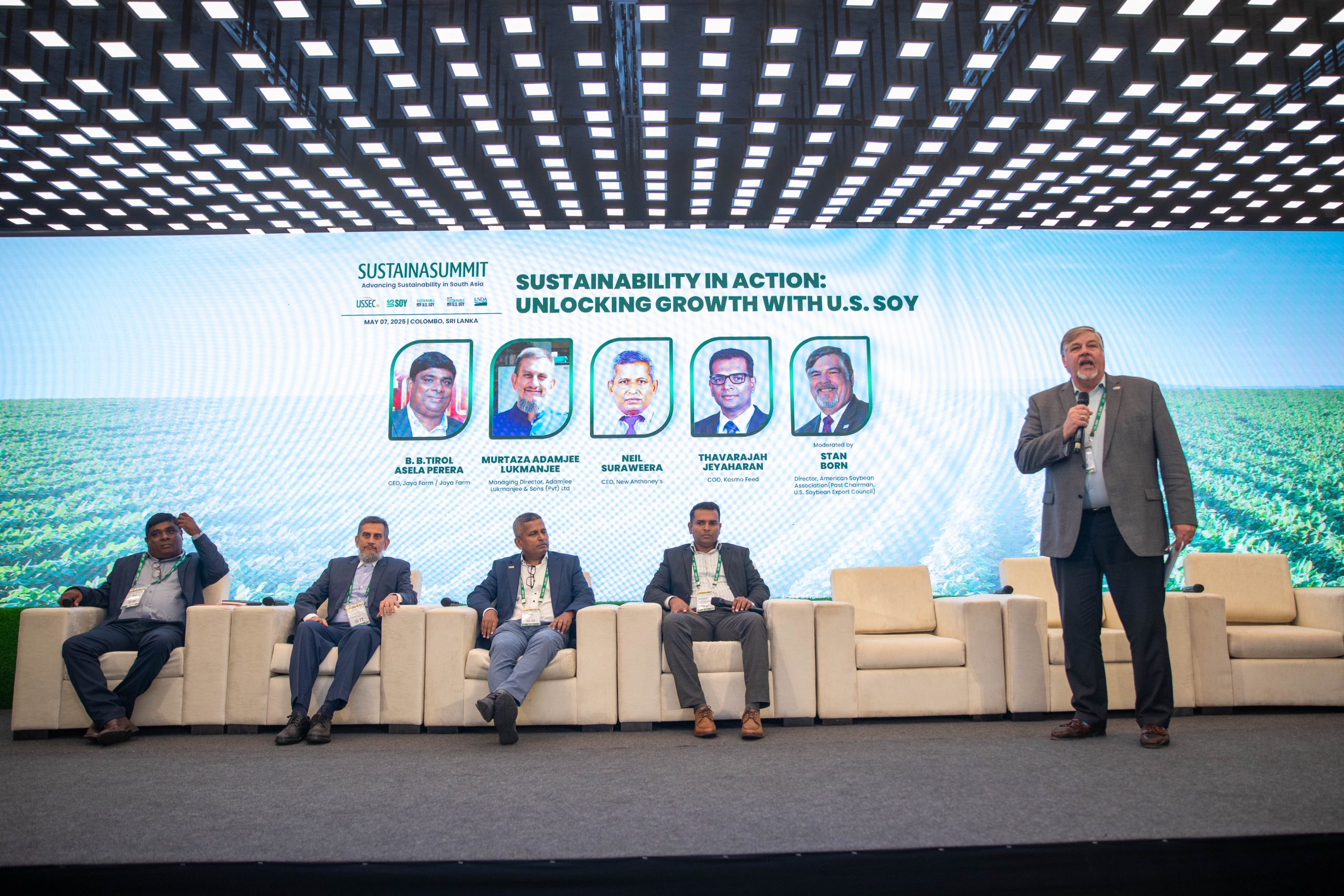Resilient Food Systems and Responsible Sourcing: Paths to Mitigate South Asia’s Environmental Impact
U.S. Soybean Export Council’s SUSTAINASUMMIT conference spotlights U.S. Soy’s role in building sustainable food systems.
Progressive leaders from across South Asia and U.S. Soy farmers gathered in Colombo, Sri Lanka, for the SUSTAINASUMMIT conference this week, hosted by the U.S. Soybean Export Council. Under the theme of “Now More Than Ever,” the conference served as a call to action, catalyzing South Asians to integrate sustainability into their businesses with a focus on responsible sourcing.
Sustainability: Beyond a trend, a business need
Sustainability is not just good for the environment; it also benefits the bottom line. According to PwC’s Voice of Consumer survey, customers are willing to pay 9.7% more for sustainable or sustainably sourced goods.[1] This market shift proves that sustainability is here to stay, and corporations that adapt will increase market share, mitigate risks and continue to build brand preference.
“Sustainably verified U.S. Soy can play an integral role in meeting customers’ evolving needs for sustainable sourcing, from livestock and aquafeed to soy foods,” added Jim Sutter, USSEC CEO. “By choosing U.S. Soy, our customers gain a competitive advantage while continuing to build trust in the market.”
U.S. Soy farmers, pioneers of sustainability:
While sustainability has recently become a trend, U.S. Soy farmers have been implementing sustainable practices for decades. Methods such as precision agriculture, crop rotation, and water management have decreased soil erosion and improved soil quality.
“We are always striving for continuous improvement,” added Joey Boudreaux, U.S. Soybean farmer and Director at the United Soybean Board. “The actions that we take today will shape the world of tomorrow. When customers choose U.S. Soy, they recognize the value that sustainably grown soy from our farms brings to their table.”
Sustainable U.S. Soy label: A key differentiator
As sustainability drives purchasing decisions, the ‘Sustainable U.S. Soy’ label gives companies a competitive advantage. Customers sourcing at least 60% of their soy from the U.S. for food and animal feed products qualify to use the ‘Fed with Sustainable U.S. Soy’ label on their packaging. Whole soybean products must contain 90% verified sustainable soy to qualify for the ‘Sustainable U.S. Soy’ label.
Reflecting on the label’s positive impact on his business, Neil Suraweera, CEO of New Anthoney’s, added, “Consumers prefer companies that supply products made in a sustainable way. With the help of the ‘Fed with Sustainable U.S. Soy’ label, we are increasing our market share faster than market growth.”
For almost three decades, U.S. Soy has been working in South Asia, fostering relationships, driving innovation, and elevating the industry’s skills.
Panel discussion featuring Sri Lanka’s key poultry producers who have signed on to use the ‘Sustainable US Soy’ label on their packaging in a panel discussion moderated by Stan Born, Director, ASA.


Leave a Reply